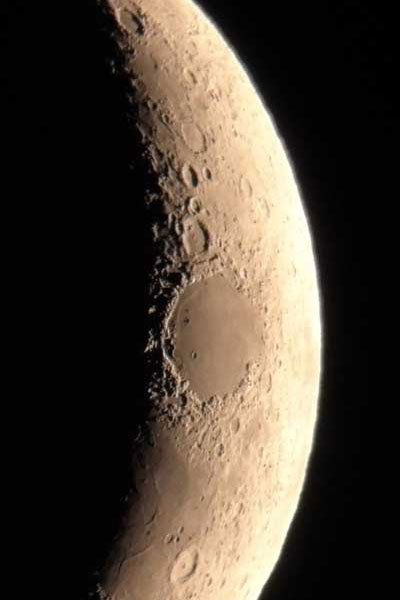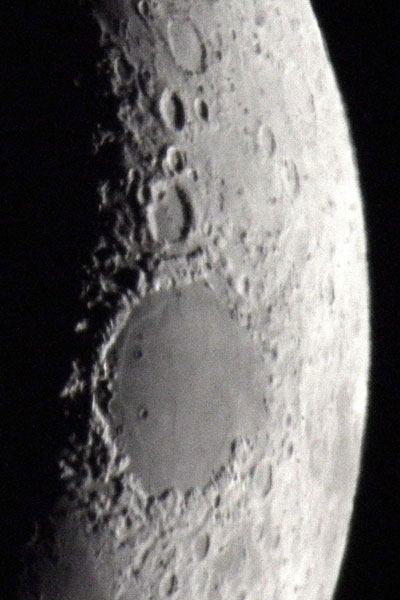Walking the Moon with my own Photos - Moon Landscapes Part 1
On these pages I do "moon walks" on the basis of my own photos. In other words, I try to name the objects on my lunar photos to get to know the moon better. Maybe these pages will help others to get to know the moon better as well...
On this and another page, I present landscapes on the moon, surface elements (maria, craters, mountains), or combinations of these. Some of the photos are repeated because they contain several interesting objects. I hope to be able to replace the photos with better ones in the course of time...
See also page Moon Landscapes - Part 2 - Back to the overview of my "moon walks".
Introduction
On this page and on a second one, I present landscapes on the moon, surface elements (maria, craters, mountains), or combinations of these. The photos are rotated by 180 degrees or mirrored so that they correspond to the normal visual impression, but they are often somewhat skewed.
See also page Moon Landscapes - Part 2.
Note: For space reasons, the description of the elements of the moon surface can be found on page Walking the Moon with my own Photos - Overview.
Maria (Seas and Oceans)
Seas (Mare, pl. Maria) are large dark lava plains in the deeper areas / craters created by huge meteorite impacts, which were gradually flooded with magma; the magma solidified into basalt lava and causes the dark coloring
All Seas
The best time to get an overview of all the moon seas is on a Full Moon. The following photos were taken shortly before Full Moon:
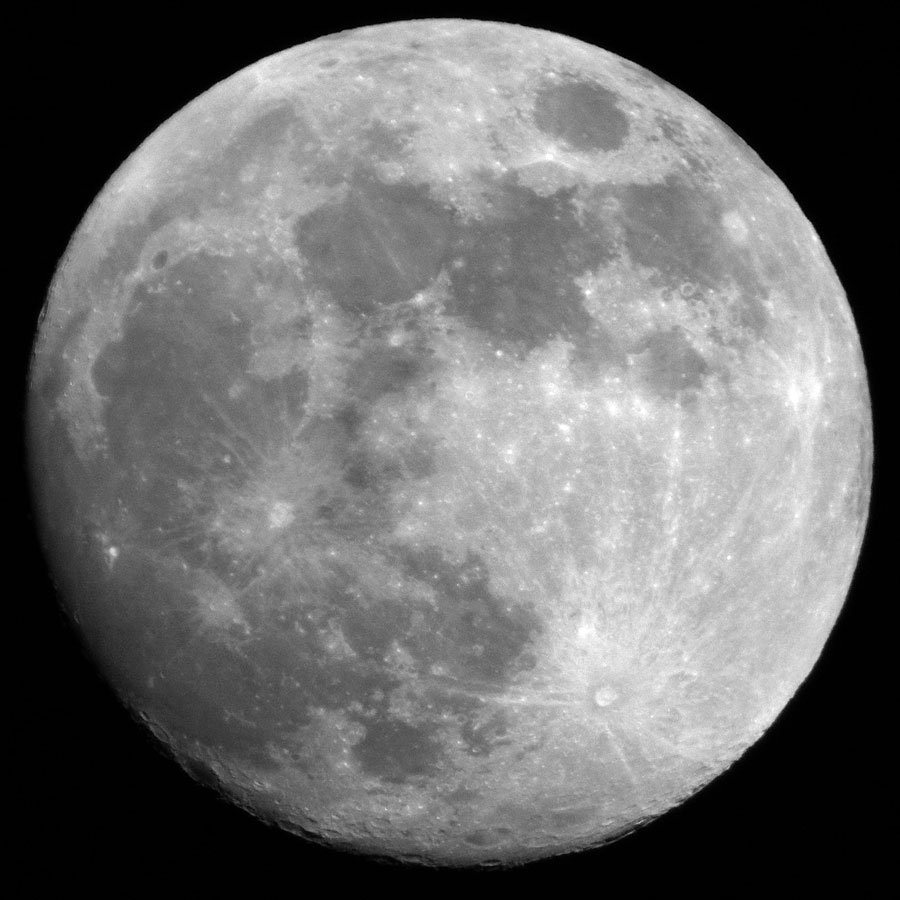 |
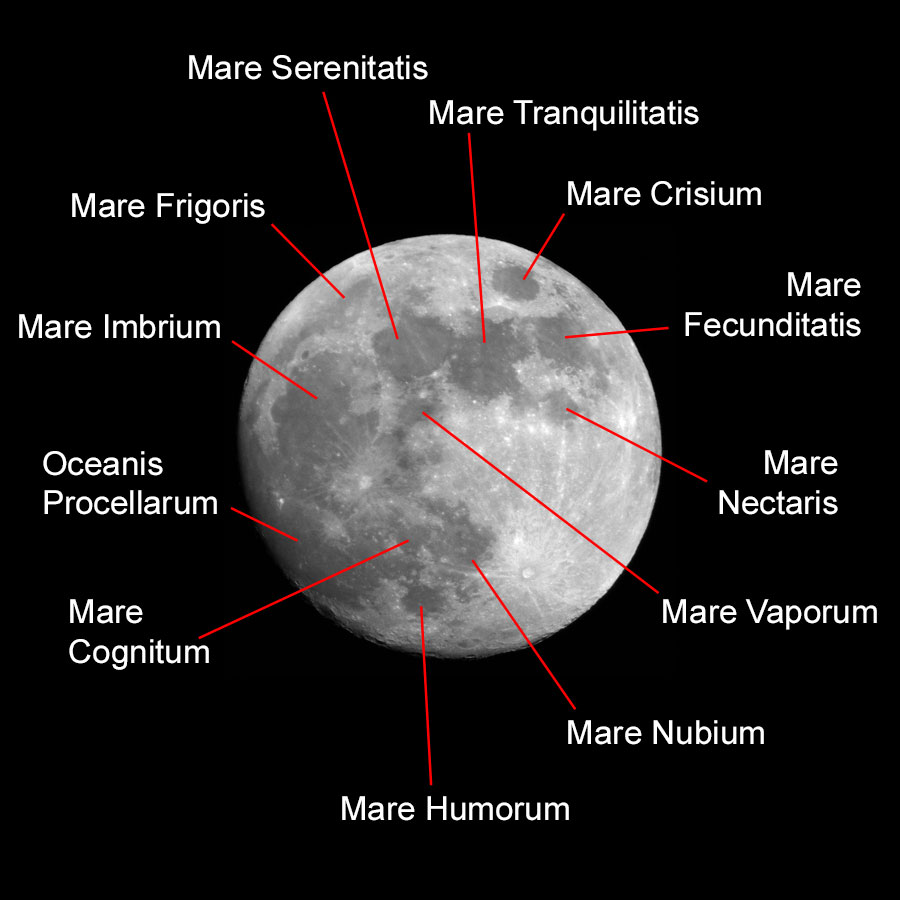 |
|
Photo data: February 28, 2010 (nearly Full Moon), Sky-Watcher Skymax-127 OTA (probably), Leica X Vario (36 - 50 mm equiv.) held to a 32 mm eyepiece (47 x)
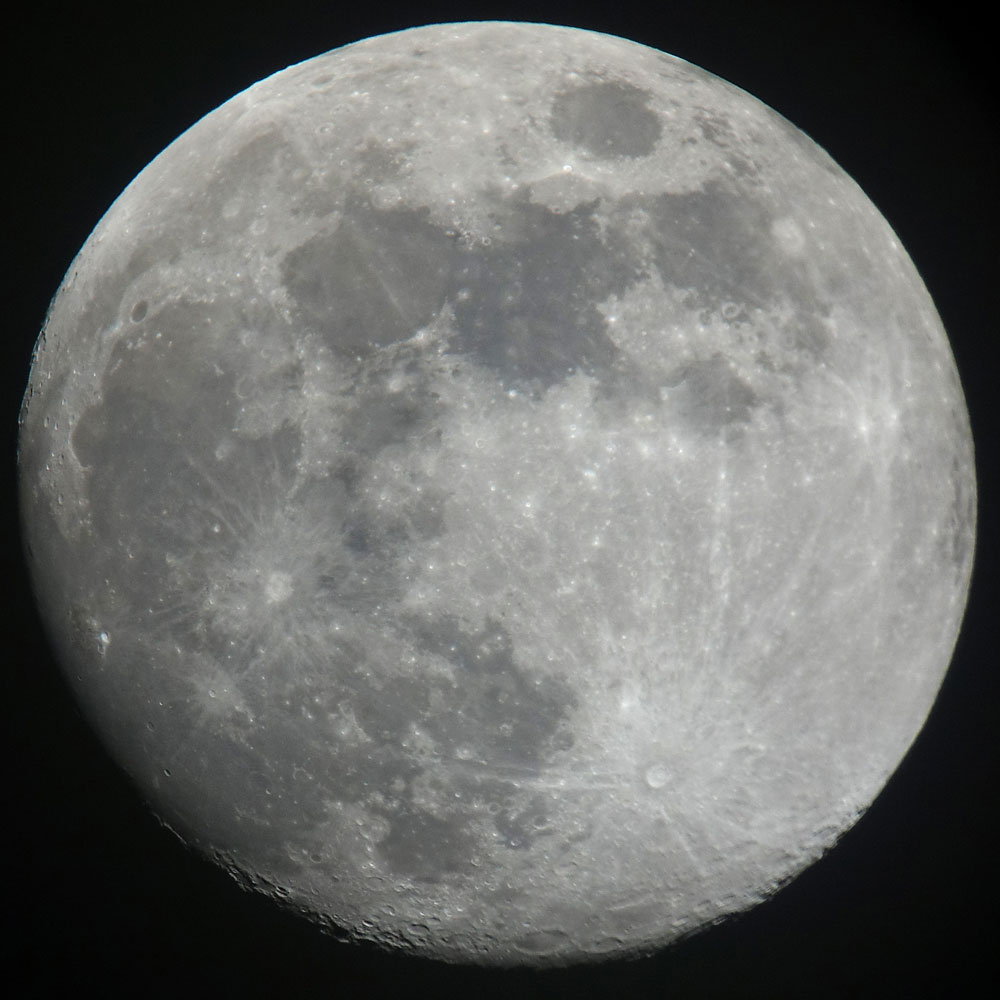 |
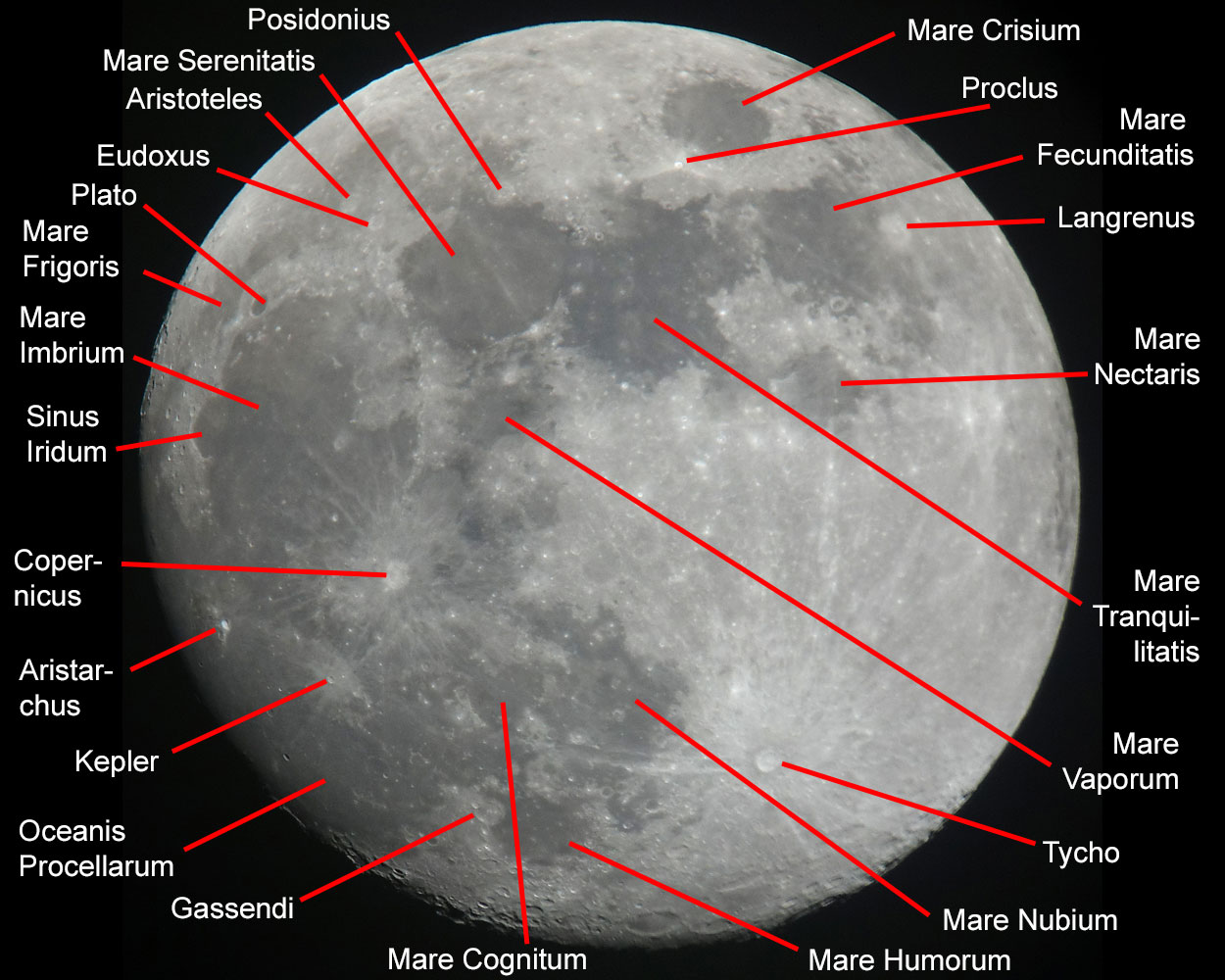 |
|
2700 pixels (ISO 200, 35 mm equiv.) |
Photo data: March 29, 2018 (two days before Full Moon), Sky-Watcher Skymax-127 OTA, Sony RX100 M4 attached to the 32 mm eyepiece
Mare Crisium
The Mare Crisium at the right edge of the moon can be seen well in the third night after New Moon, especially the crater walls surrounding it (left and center photo). At Half Moon only the dark lava surface can be seen (right photo).
The Seas on the Right Side of the Moon
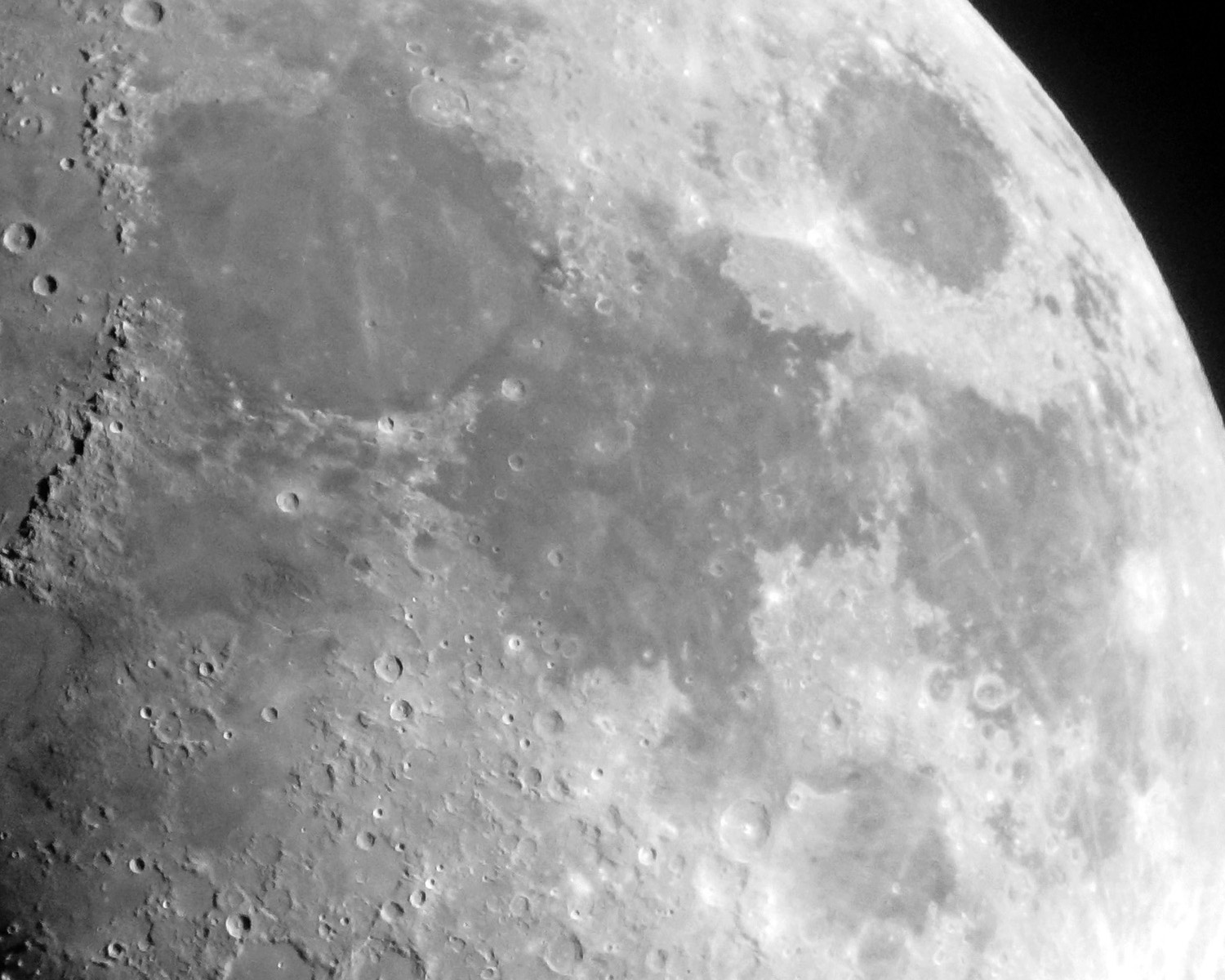 |
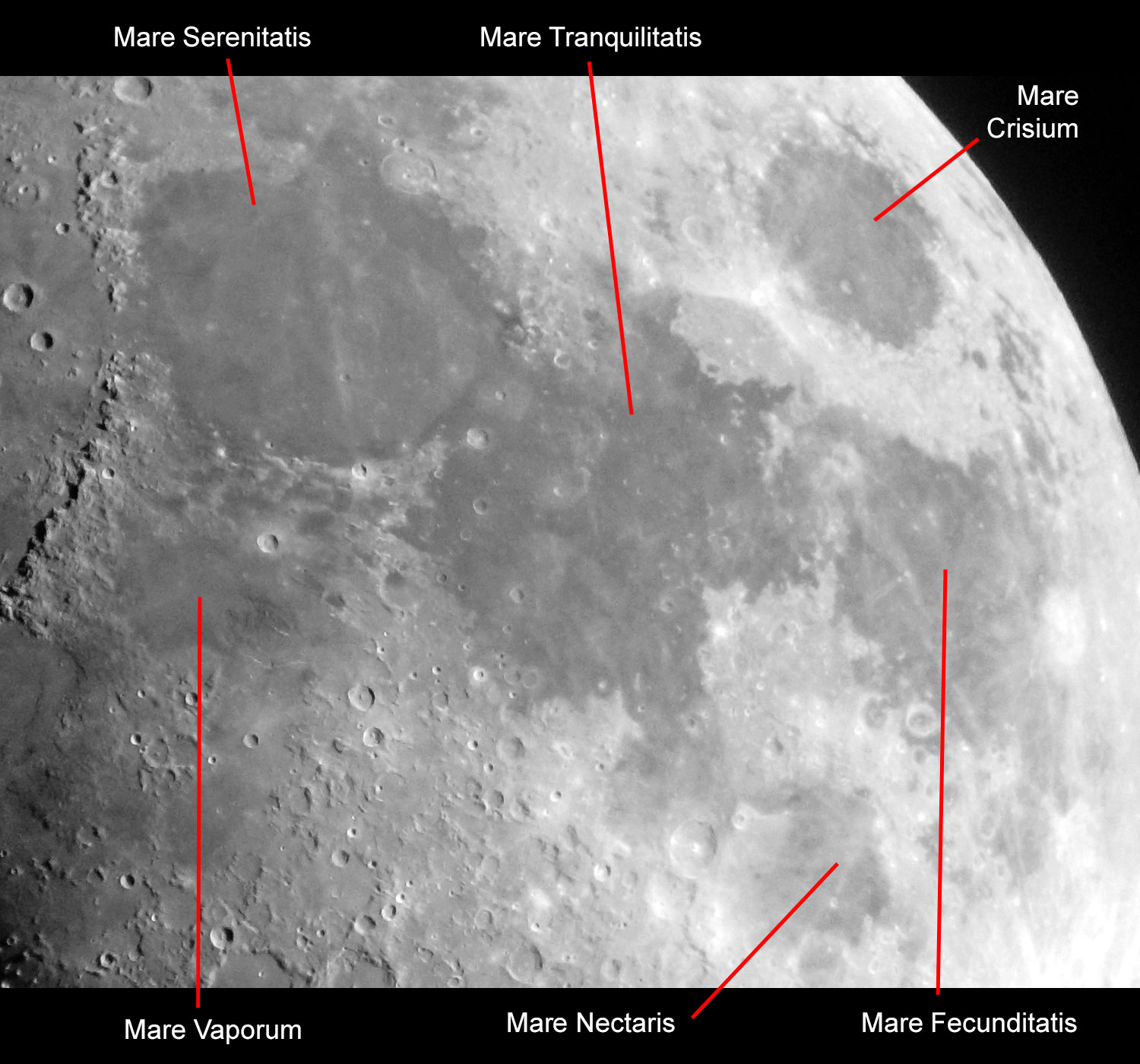 |
Photo data: March 25, 2018, Sky-Watcher Skymax-127 OTA, Sony RX100 M4 attached to the eyepiece
Mare Imbrium
The following section from February 26, 2018 (three days after Half Moon) shows Mare Imbrium and the mountains that surround it.
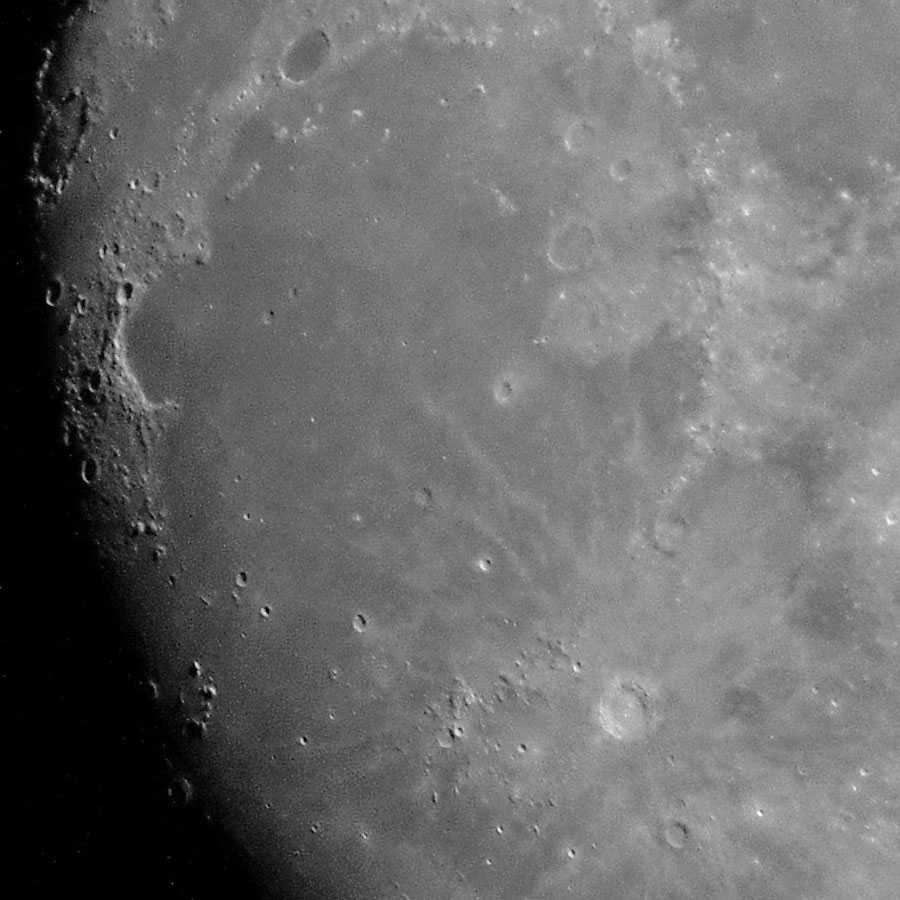 |
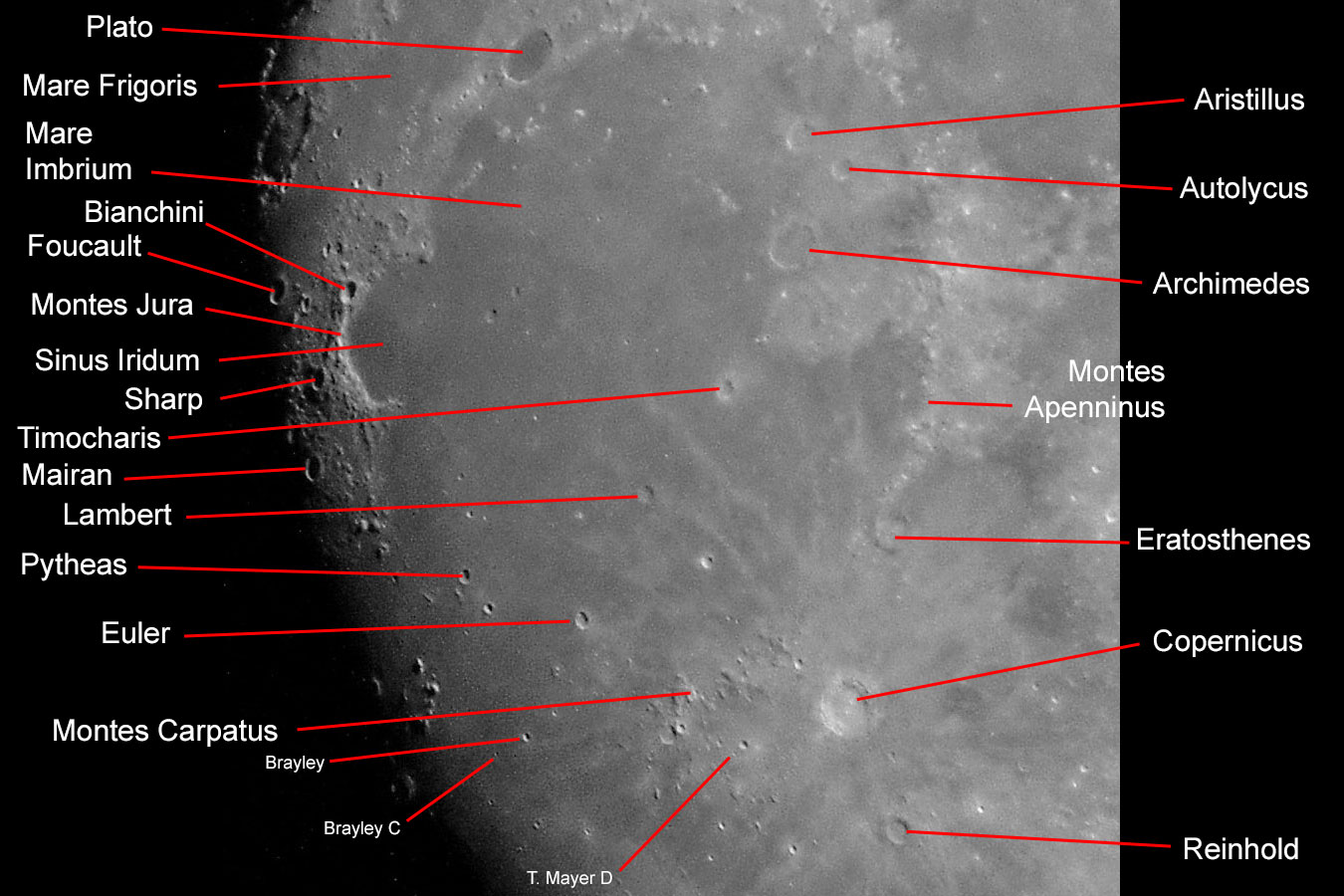 |
Photo data: February 26, 2018, Sky-Watcher Skymax-102 telescope, Ricoh GR held to the eyepiece
Montes, Mont (Mountains, Single Mountains)
Montes Alpes, Montes Caucasus, Montes Spitzbergen, Mons Pico, Mons Piton
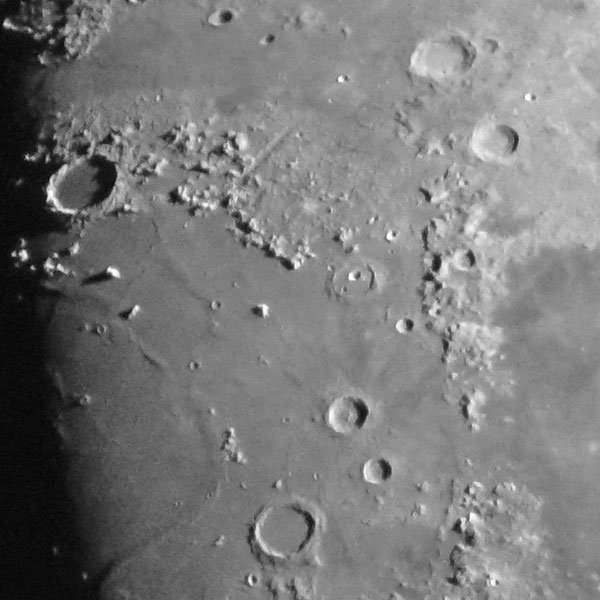 |
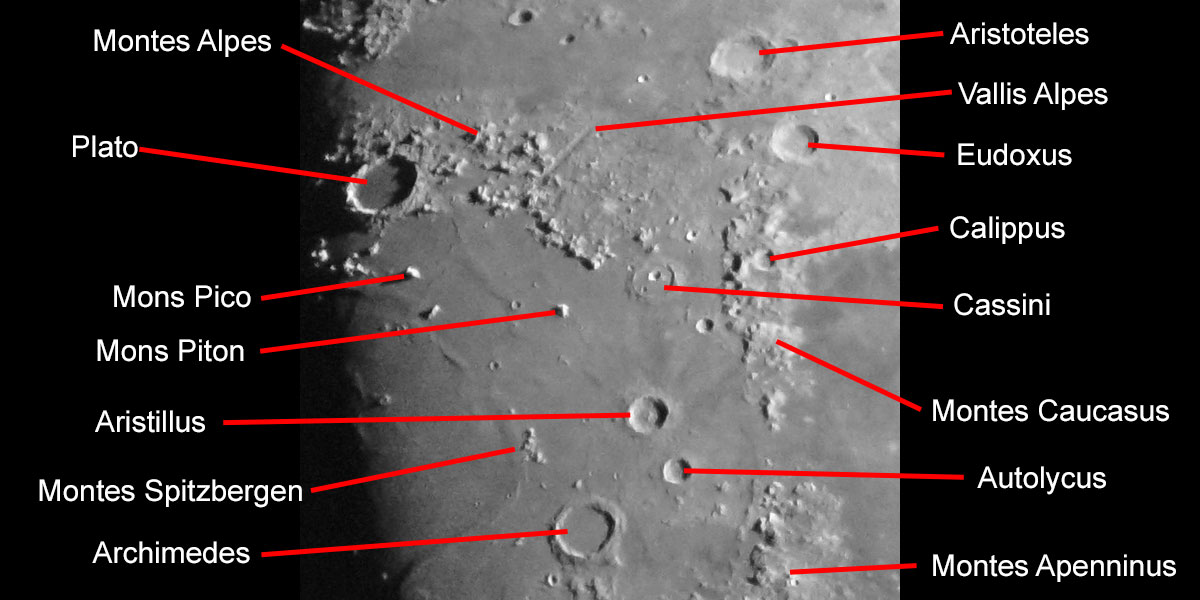 |
|
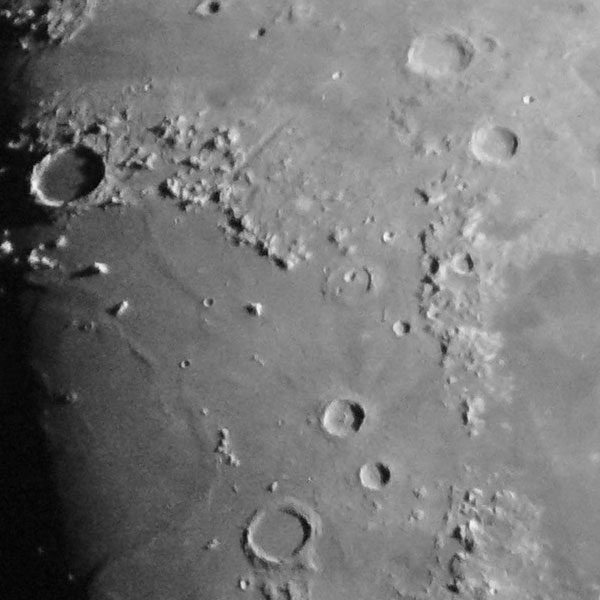 |
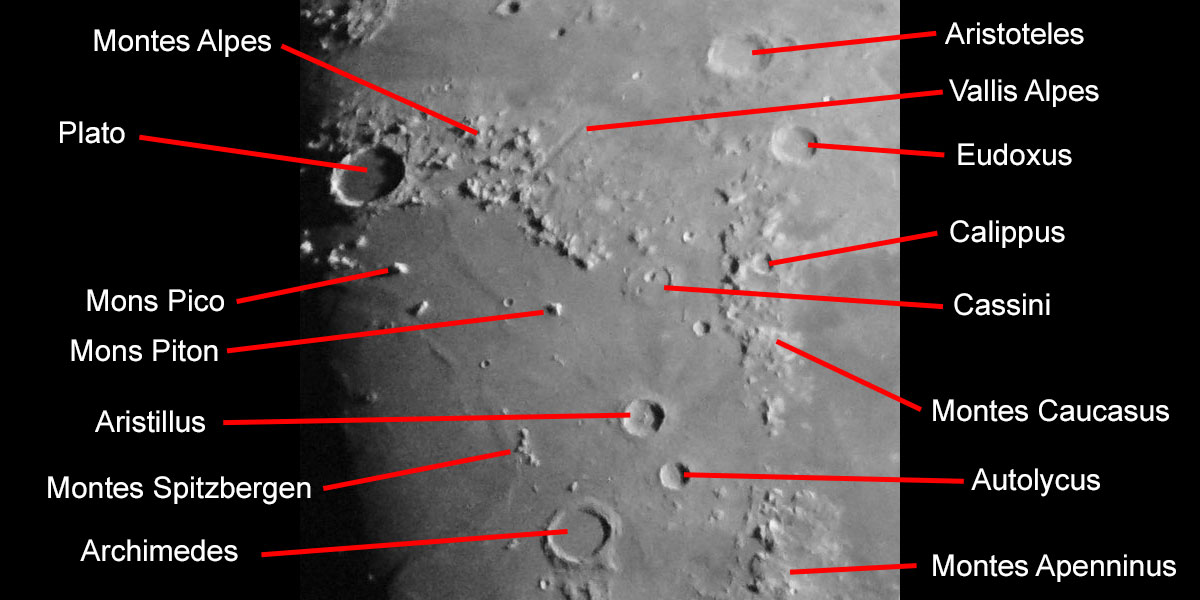 |
Photo data: March 25, 2018, Sky-Watcher Skymax-127 OTA, Sony RX100 M4 attached to the eyepiece
Montes Apenninus
The Montes Apenninus are the largest mountains on the moon.
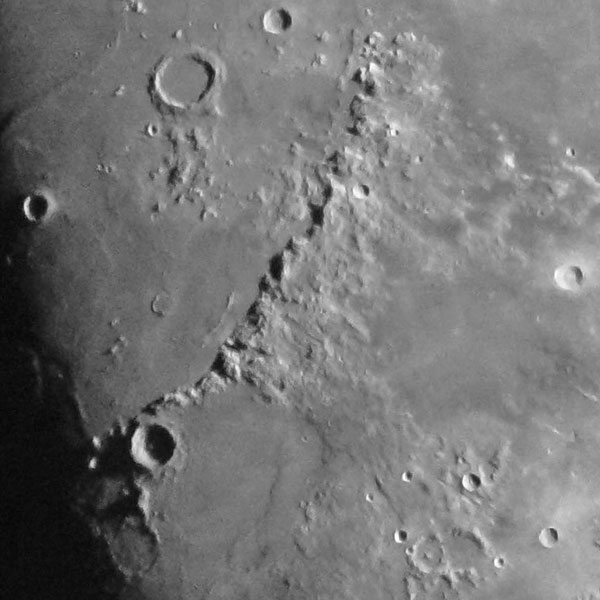 |
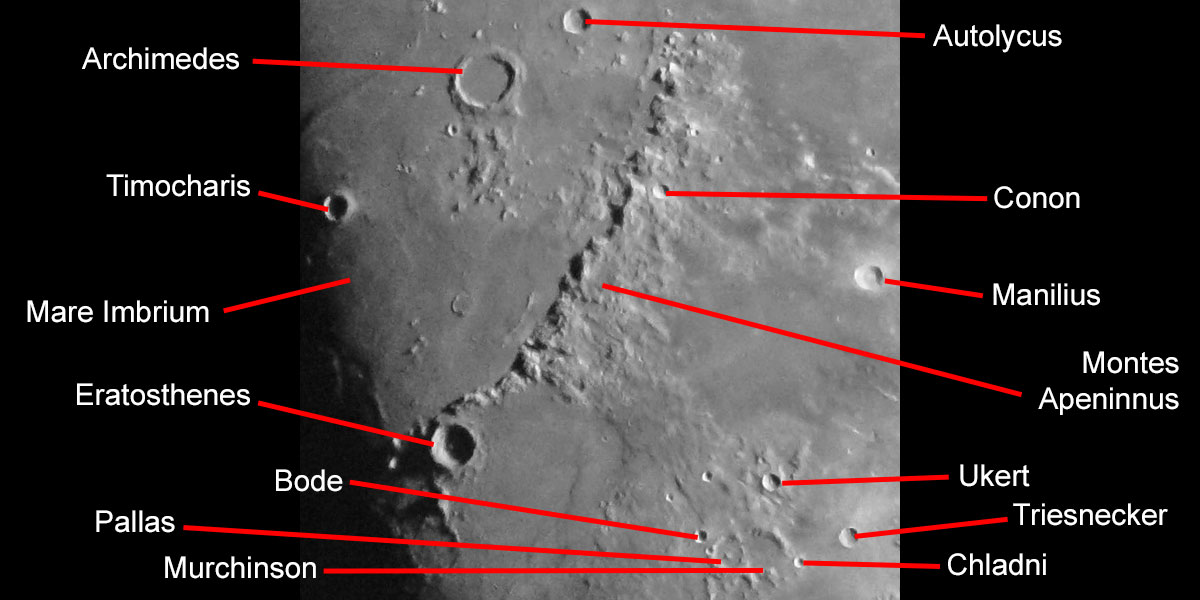 |
|
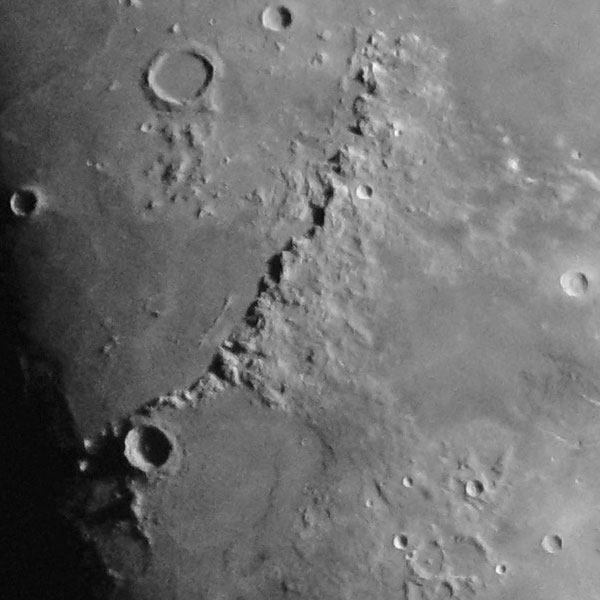 |
 |
Photo data: March 25, 2018, Sky-Watcher Skymax-127 OTA, Sony RX100 M4 attached to the eyepiece
Montes Alpes, Montes Caucasus, Montes Apenninus
Here all three mountain ranges at the right edge of Mare Imbrium together in one photo:
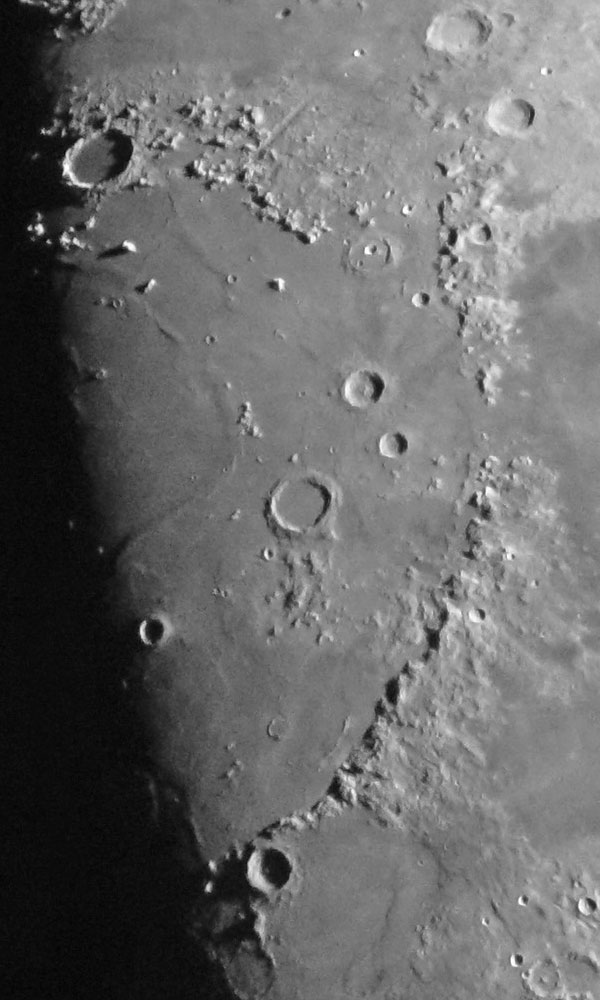 |
 |
Photo data: March 25, 2018, Sky-Watcher Skymax-127 OTA, Sony RX100 M4 attached to the eyepiece
Montes Jura, the "Golden Handle", Montes Carpatus
On February 25, 2018 (two days after Half Moon), the Jura mountains looked very nicely at the terminator. Two photo sections show the Jura mountains (top left) and the craters Plato (top) and Copernicus (bottom). Above and to the left of Copernicus you will find the Montes Carpatus.
When the Jura mountains appear at the terminator and are lighted by the sun while still extending "into the darkness", this phenomenon is called the "golden handle."
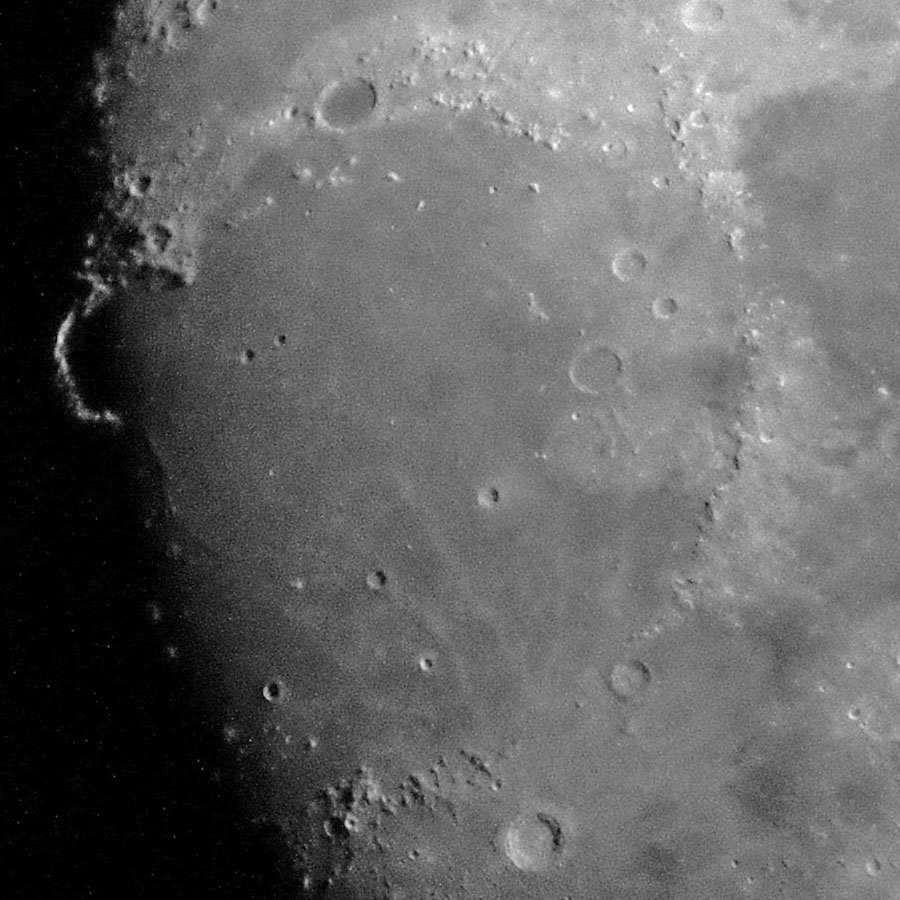 |
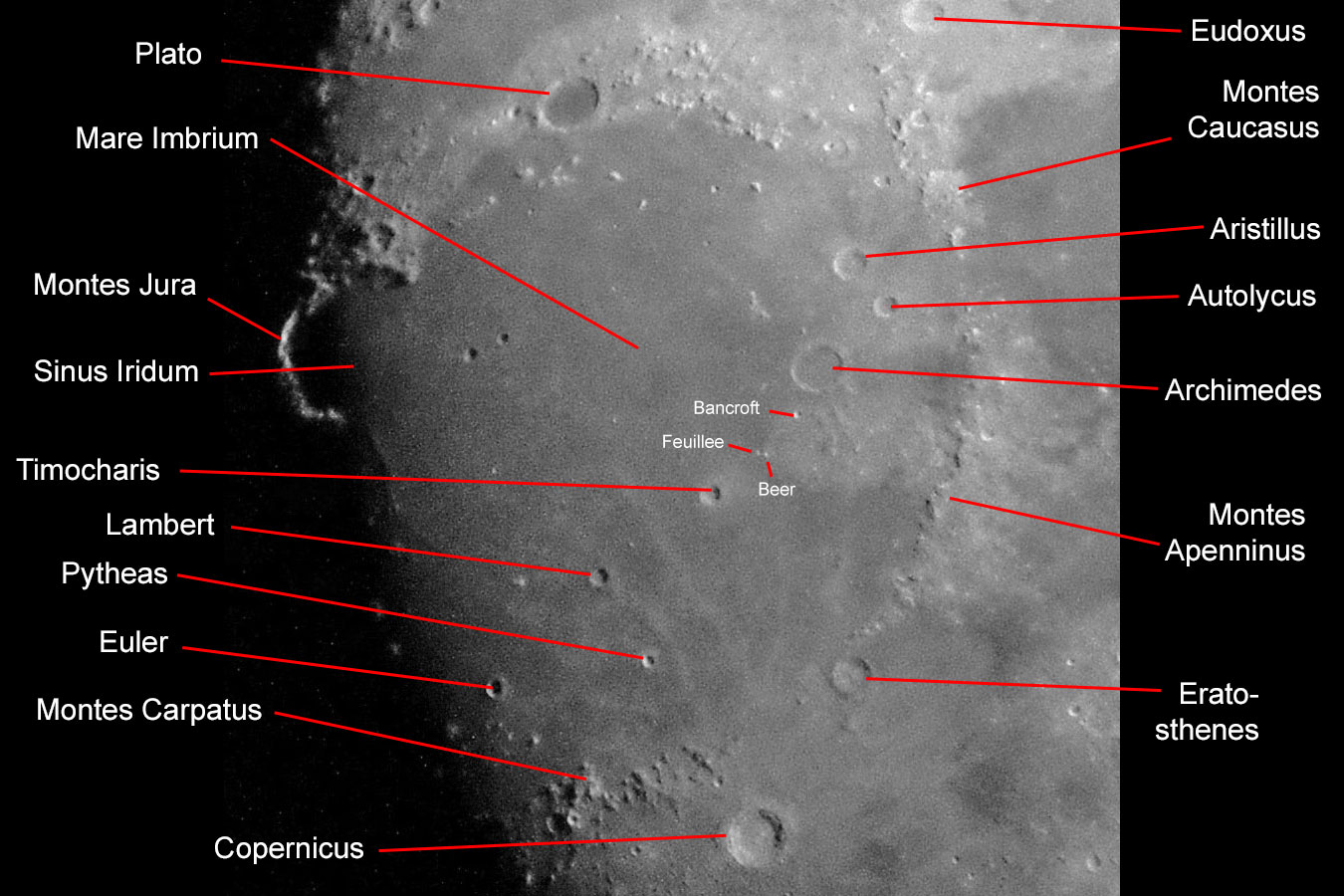 |
|
Note the "golden handle"! |
||
 |
 |
|
Note the "golden handle"! |
||
Photo data: February 25, 2018, Sky-Watcher Skymax-102 telescope, Ricoh GR held to the eyepiece
One day later, the terminator has left the Jura mountains. The following section from February 26, 2018 (three days after Half Moon) has been made lighter and shows again the Jura mountains (top left) and the craters Plato (top) and Copernicus (bottom). Above and to the left of Copernicus you will once again find the Montes Carpatus.
 |
 |
Photo data: February 26, 2018, Sky-Watcher Skymax-102 telescope, Ricoh GR held to the eyepiece
References
- Mond (Wikipedia): de.wikipedia.org/wiki/Mond
- Moon (Wikipedia): en.wikipedia.org/wiki/Moon
- Lambert Spix (2013, 3. Auflage). moonscout - Mondmeere, Krater und Gebirge einfach finden und beobachten. Oculum-Verlag. ISBN 978-3-938469-58-3
- Lambert Spix & Frank Gasparini (2011, 1. Auflage). Der Moonhopper. Oculum-Verlag. ISBN 978-3-938469-54-5
- Ronald Stoyan, Hans-Georg Purucker (2013, 1. Auflage). Reiseatlas Mond. Oculum-Verlag. ISBN 978-3-938469-64-4
- Virtual Moon Atlas: ap-i.net/avl/en/start
| 18.04.2023 |
